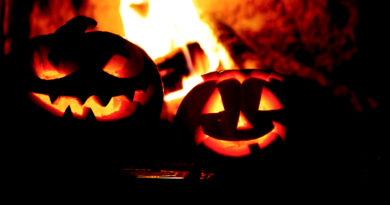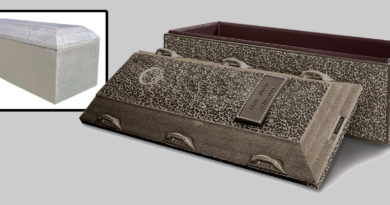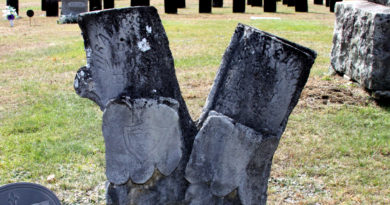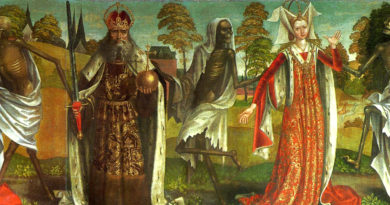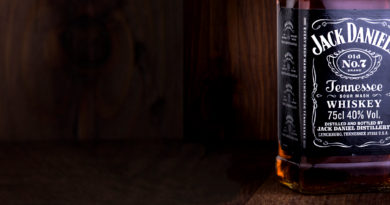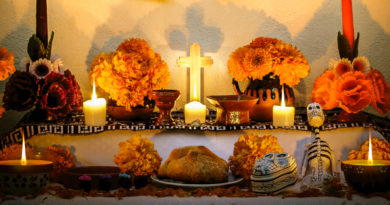Cemetery Headstone Symbols: Death’s Head
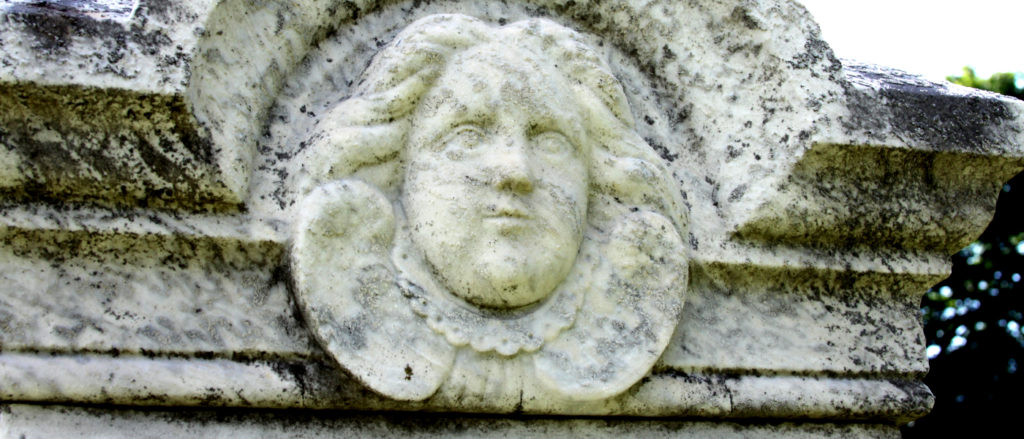
a far more sobering meaning. Photo © Chris Raymond
Depending upon your perspective, a cemetery, church graveyard or memorial park might prove a location to avoid as long as possible or a place of fascination and (gasp!) even enjoyment. For many of us in the latter camp, visiting the silent stone sentinels and mute metal markers found in a cemetery enables us to pay homage to the dead, trace our family history and genealogy, capture interesting photographs, or find simple moments of solitude and contemplation.
If you’ve visited a cemetery for any reason at some point, you might have wondered about a design you saw on an old tombstone and what it means. This article examines the meaning behind a “death’s head” — a headstone symbol commonly found in older cemeteries, church graveyards and memorial parks.
The Death’s Head Symbol
Depending upon when an individual died, a death’s head on a cemetery headstone or monument can assume one of several evolutionary forms. Roughly prior to the American Revolution (1775-1783), a death’s head usually comprised a human skull above a human bone — either a single horizontal bone or two bones forming an X (similar to that found on a pirate flag, i.e. a skull and crossbones).
Later, the death’s head symbol started evolving, and subsequent versions depicted a human skull with bird or angel wings, and, eventually, a human face with wings extending directly from the face, chin or neck. During the 1800s, the wings started to assume a less literal or easily identifiable form and increasingly resembled a bulbous “wreath” that framed the face (as seen in the photograph above).
Author’s Note: It is easy to overlook or misidentify later forms of death’s heads in cemeteries. Often, the requisite wings appear to resemble human shoulders, or the collar of a shirt or jacket (especially if the death’s head is weathered). Because of this, it’s easy to assume a later death’s head form merely depicts an angel or cherub.
The Meaning of a Death’s Head
The death’s head symbol arose from the Puritanical view of life and death that existed in England and North America prior to the Revolutionary War. According to Puritanism, death served to punish human beings for the original sin committed by Adam and Eve in the Garden of Eden. Thus, Puritans naturally feared death and God’s eventual judgment, and the symbols they used on cemetery tombstones and monuments during this period reflect their stark, bleak view of life and death.
A form of memento mori, the initial death’s head symbol (a human skull and human bones) served to remind the living of their mortality and the fate awaiting them, i.e., “You, too, will end up this way.”
After the formation of the United States, however, Puritanism started to lose its hold on the religious beliefs of citizens. Gradually, shifts in religious and cultural influences triggered a softening of existing Puritanical life-and-death views. Tombstone symbology started to reflect this during the 1800s by reducing the harsh reminders of human mortality (such as a skull and crossbones) and substituting a more human/angelic look to the previous skull, as well as using wings instead of bones — a symbolic reference to the growing belief of “flying” up to heaven after death and the promise of an afterlife.


